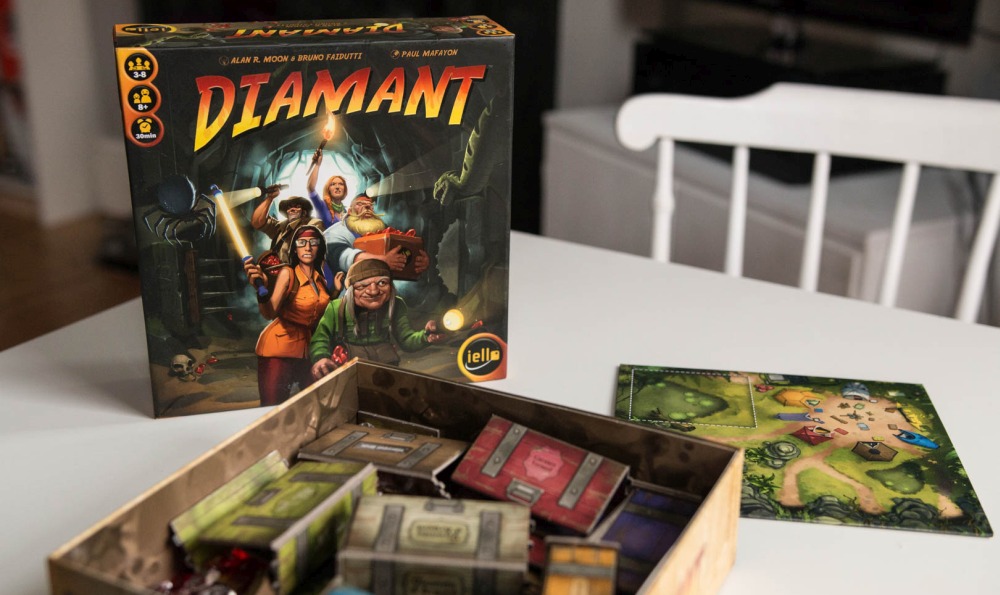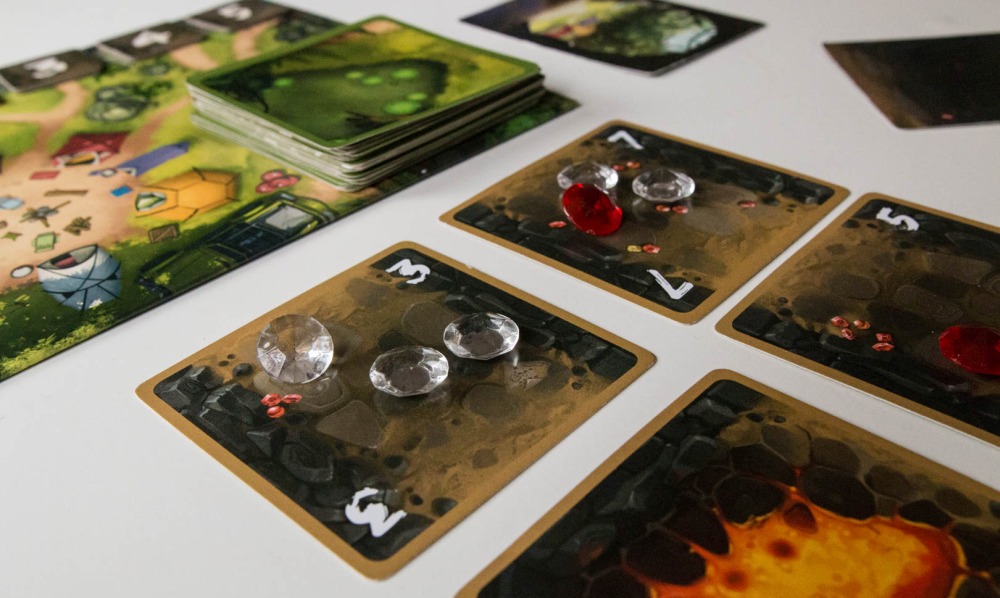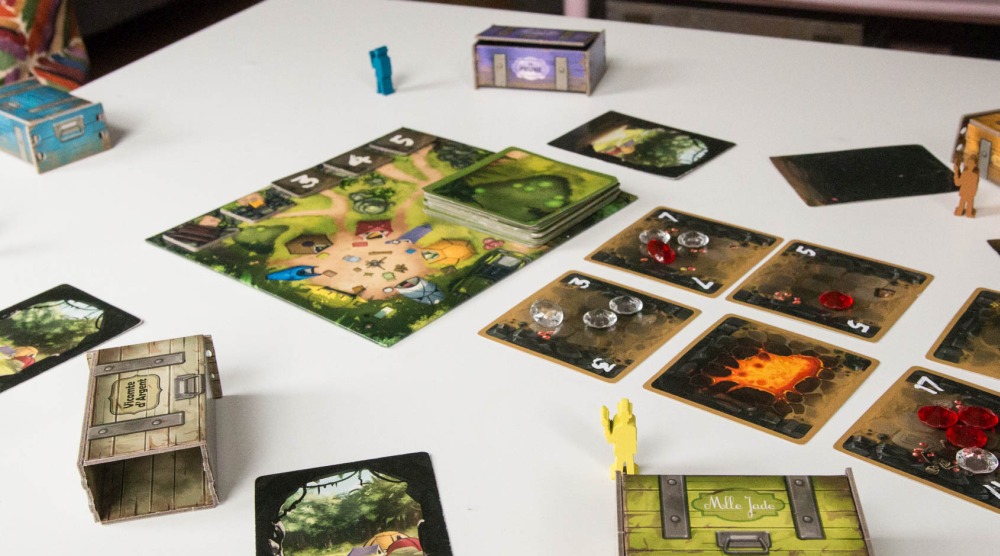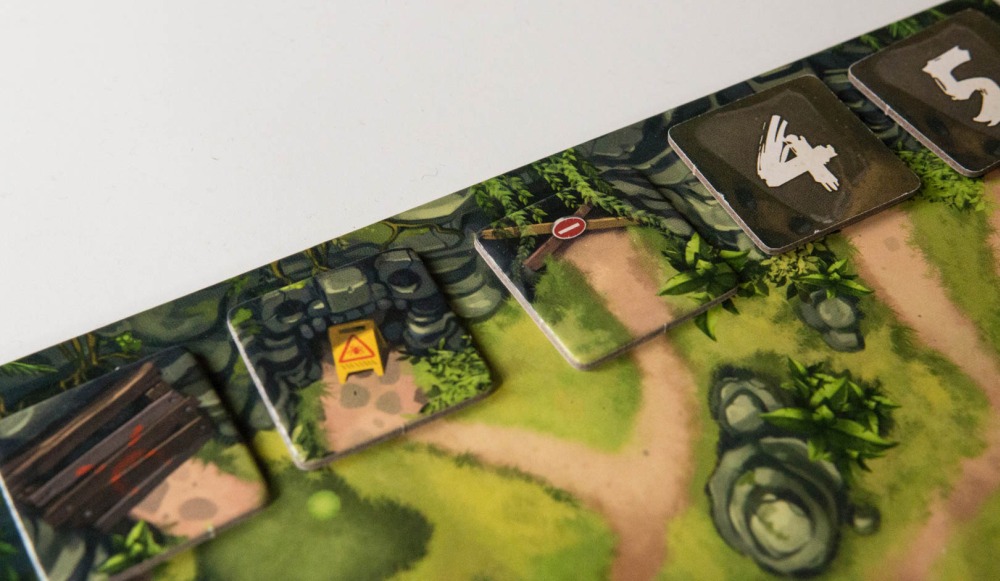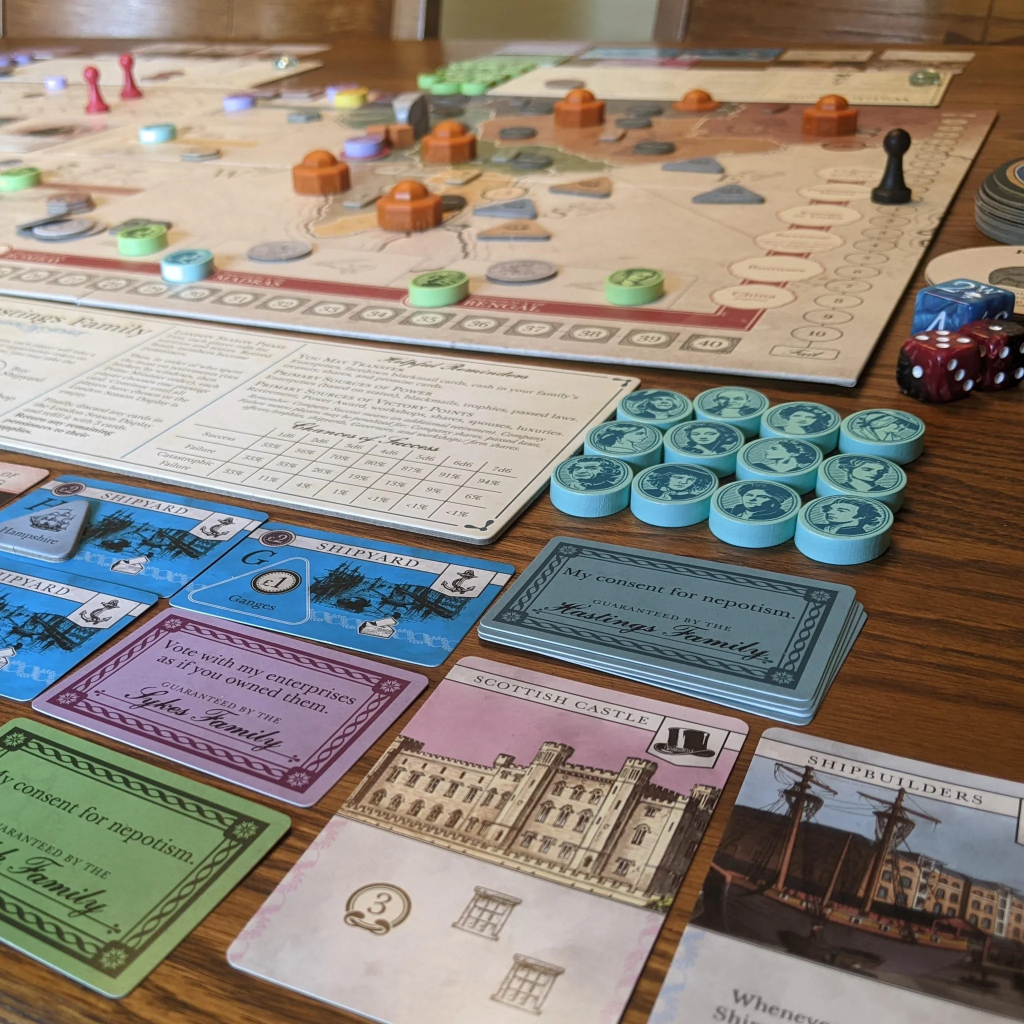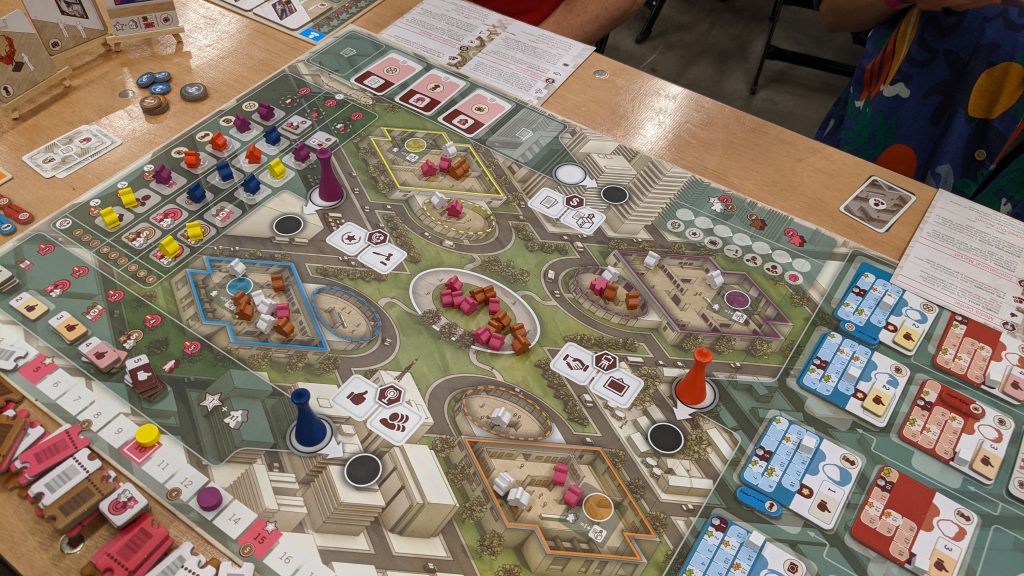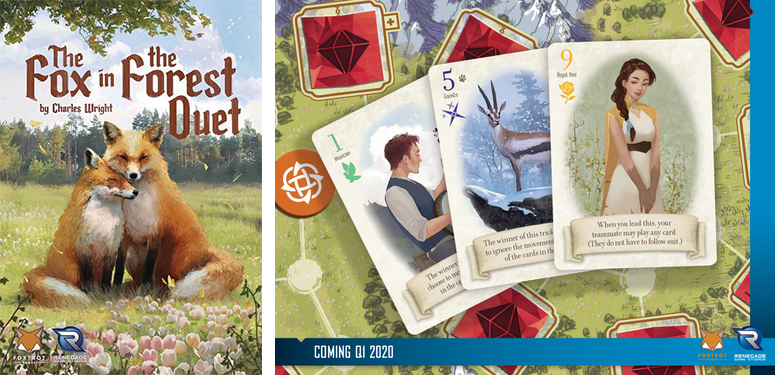Paul: QUINTIN. I know we want to tell people all about Diamant and how this cute-but-cruel game of pushing your luck can make you either rich or dead, but I’ve got to say one thing right thing right here, right now, right off the bat. Right?
Quinns: I’ll allow it!
Paul: Diamant is probably the most fun I’ve had for the least investment of time and energy SO FAR THIS YEAR. I’m so sorry. I just had to blurt that. It’s a petite wonder. PETITE. WONDER. Like… Danny DeVito. Or… a teabag?
Quinns: You’re arriving at this party a little late though, aren’t you? Last year I called Incan Gold the best little push-your-luck game I’d played in forever. Diamant is just a beautiful new edition of the same game! You can’t talk about it like you’ve just found a dead sea scroll in your back garden.
Paul: All right, all right, back that boulder up, snarkaeologist. Incan Gold? The 2006 game? And when did you come to it, exactly?
Quinns: Erm. 2016.
Paul: An entire decade of incompetence.
But now Diamant is out we have a shot at redemption! Once and for all, let’s tell these people about a classic game, and why Diamant is the definitive version.
The genius that gleams at the core of Diamant is how it’s a simple game of wanting to reach just little bit further to get just a little bit richer, which loses none of its luster as you pack in more players. With three players, Diamant is a fast, exciting little gambling game. With eight players Diamant is… an equally fast, and even more exciting little gambling game.
You have this cave system, you see, which you all explore as a gang by laying out cards one at a time. Sometimes the cards show you something lovely, like a pile of gems. Sometimes they show you a horrible trap. Gradually, you reveal a trail of both as your table of explorers push deeper and deeper.
Quinns: If you start to feel the sweat on your brow (and we’ll explain why you would in a moment), cowardice couldn’t be simpler. Between the reveal of each new cave card, every player chooses whether to reveal their “Exploration!” card or what I call their “No no no no no,” card, meaning you flee the cave and take no further part in the exploration, but you do get to stow your share of gems in your personal crate.
Paul: Hah, but why would you stop when clearly there are more gems waiting to be found deeper in the caves?
Quinns: So this is the ridiculous bit. When you reveal a card depicting gemstones as part of the exploration you divide those gems up between any explorers that are still poking through the cave, but any gems you can’t divvy up are left lying on the floor. When someone chooses to leave the cave, they pass all of those little piles of gems on the way back out and – with nobody looking – can scoop them back up.
…Unless other explorers also chose to leave at exactly the same moment as you, in which case you walk back through the cave together and have to divide that loot again. Now you’re a coward AND a failure, and all of your friends are laughing.
Paul: Ha! Take your trashy trophies, you short-sighted spelunker. I’m going to push on deeper to find larger troves of treasure and the game’s valuable artefacts. After all, the only real danger is swinging logs. And falling boulders. And snakes. What’s this? Asps! Very dangerous. You go first.
Quinns: They’re all dangerous. If exploration sees you drawing a second card of a danger you’ve drawn previously, it’s all over. That round of play ends. Immediately. If you haven’t left the cave and banked your gems? Tough totems! They’re all gone.
Paul: But what are the chances of you drawing the same type of danger twice, versus finding more caches of gems and artefacts?! It’s not all that high. It’s… moderately high. But it increases as you push on, tension rising like the hairs on your back. Still, it’s worth drawing just one more card, right? Taking just one more step to see if you can find one of those big, big hoards. After all, you… Wait. Where did you go?
Quinns: I left. I left two cards ago. I left and, because none of the rest of this foolhardy fellowship came with me, I left on my hands and knees, stuffing priceless carvings down my trousers the whole way.
Paul: Oh. Well, that’s fine. I’ll just keep going! Because when I’m exploring alone, I get every single gem I find! I’d be MAD to turn back now.
Quinns: And that’s the real crux of Diamant. It’s not just about knowing when to flee, it’s also about anticipating everyone else. You don’t want to share and you don’t want to let anyone else get away unchallenged.
Paul: So on the surface, this looks like a game of pushing your luck as you try to win more and better loot, but really it’s about anticipating your kleptomaniac cousins and trying not to find yourself stuck in a pile of snakes with nothing to show for it while everyone else is chomping beans back at camp. And this is how Diamant turned into the game with some of the meanest, snarkiest, sassiest table talk I’ve seen in years. Endless, endless bad behaviour. “Are you leaving now? What about now? If you don’t leave, she will. Do you want her back in her tent, pouch of gems and belly full of beans?” And you only get five attempts to explore these caves and find your fortune. If you mess one up, you can bet the pressure’s on during the next.
Quinns: I think it’s a game that fosters these fun observations because every possible thing that might happen is a delight. If someone leaves the cave, that’s funny and affects everyone, because as they pocket all those gems on the way out they remove your incentive to turn back. When you draw a second danger card and the expedition ends, everyone giggles or groans (depending on whether they’re in or out of the cave) like a weird, conversational sex act.
Paul: You know what I’ve realised? The real danger in this game is only ever the players. They are both your ETERNAL TEMPTATION and also your DOWNFALL. It’s almost Biblical.
Quinns: Speaking of holy devotion, I can’t tell you what a delight this new Iello edition of Diamant is after playing the previous edition, Eagle Games’ Incan Gold. The best thing I can say about Incan Gold is that after you’ve hacked your way across the maddening jungle that is its manual, the box doesn’t actively hinder your enjoyment of the design.
Diamant doesn’t just have a perfect manual, and it doesn’t just surpass Incan Gold’s Continue and Exit cards, which look ambiguous at a distance. Every card has gorgeous art, you get little wooden explorers, and lovely crates to stash your collection of gems and a nice little board showing base camp. And for what? Just a few pounds more than Incan Gold.
Paul: I loved squirrelling away all my gems into a tiny cardboard crate. And lay my explorer person down on a tent between rounds. For a well-deserved rest, you see. You know me. I love a nap after a good squirrelling.
Quinns: This is a fact.
Paul: I also love Diamant. It’s quick, it’s mean, it’s canny, it’s sassy. It’s the very spirit of a magpie boxed and packaged and presented as a game. What a shining wonder.
Quinns: Yes. Literally anyone could own a copy of this game. It’s one of those golden boxes. Shut Up & Sit Down unquestionably recommends Diamant.
Now here’s the crazy part! If our American or Canadian readers would like this superlative edition of a classic design, they’re going to have to order Diamant from a European online retailer, like this one. It turns out that Iello doesn’t have publishing rights in North America! Just as America is stuck with mysteriously terrible chocolate bars, so it seems they’re stuck with Incan Gold.
Or better yet, you could play the thieving explorer yourself, come here on holiday and fill your suitcase with treasures from the old world! By which I mean copies of Diamant. Paul, this could be like the Elgin Marbles all over again.
Paul: You promised we wouldn’t talk about those bloody marbles until the court case was over!
Quinns: Oops. Right you are!

